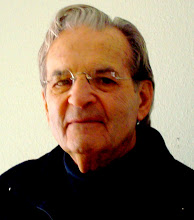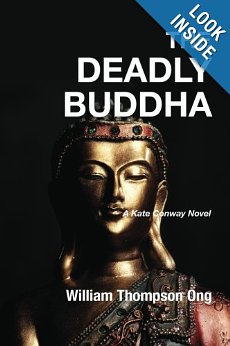(First of a three-part interview series)
When Joanna Poppink was 40, she faced a pivotal, critical decision – do I continue to feed bulimia, or do I make a choice in how I eat?
The crossroads to which the author of the wonderful book Healing Your Hungry Heart came is familiar. The National Eating Disorders Association estimates that 20 million women and 10 million men will have dealt with one of hree eating disorders – anorexia nervosa, bulimia nervosa, or binge eating – at some point in their lives.
In a culture where up to 60% of elementary school girls are concerned with their weight, the seeds are planted deeply. They are fertilized to alarming and sometimes fatal levels by media messages and concepts of attractiveness that openly espouse the super-thin.
Joanna made major changes in her life during her 30s. When she entered her 40s, she dealt with her bulimia head-on. “So much of my energy and thinking and behaviors went into maintaining my eating disorder,” she says. “If it were free for something else I could do vast things in the world. That thought gave me real hope and incentive for the first time.”
Today, Joanna works with people struggling with eating disorders as a therapist. She also has written Healing Your Hungry Heart, part-memoir, part-prescriptive and part-self help and exercise, which gets right to her point about the origin of eating disorders – at the heart level. Learning to love and trust ourselves, she says, is a most critical step for coming to grips with any eating issue.
On this holiday season, when food consumption is higher than normal, we present a very special and exclusive three-part interview with Joanna. Once read, if you know someone who is in a difficult situation with their eating, please pass along this link or provide information on Healing the Hungry Heart.
WORDJOURNEYS.COM: Joanna, tell us briefly about your professional background, and when you started working with people with eating disorders.
JOANNA POPPINK: I was a returning student in the 70’s. I finished my B.A. at UCLA and Masters at Antioc, majoring in psychology. Then years of internships. I passed the licensing exam, and the State of California gave me my MFT license. Partly because of my age, partly because of my interests and partly because of luck as I advanced in my studies, I befriended senior clinicians at UCLA and at psychoanalytic institutions.
Bulimia was in the process of being discovered. I had suffered with bulimia since I was 13 and was new in the mental health profession. My friends had decades of experience in the mental health profession but knew nothing really about bulimia.
WJ.COM: Yet, because of being in a crowd of senior clinicians, you started talking with each other about it.
JP: Because we cared about each other as friends and respected each others’ minds we talked openly and in depth about the symptoms and experience of bulimia – my part, and how that could relate developmentally and psychologically to what was known about normal and abnormal human development (their part). I had no idea just how rich and powerful these conversations would be in furthering our knowledge about the illness and what it takes to recover. They benefited us and the people we would work with for years to come.
My working with eating disorder patients developed gradually as my own recovery progressed and people who had children with eating disorders and then adult women with eating disorders began to find me. It was years later that I decided to specialize in the field.
WJ.COM: When you were 40, you came face to face with your own bulimia. How did that happen?
JP: No one knew I was bulimic. I ask myself the question you are asking and many people have asked. My answer changes over the years as my awareness grows. I thought the change came, when, after cleaning myself up after a purge, I thought, “What could I do with all this energy I use for my eating disorder if I used it for something else?”
My answer staggered me. So much of my energy and thinking and behaviors went into maintaining my eating disorder. If it were free for something else I could do vast things in the world. That thought gave me real hope and incentive for the first time. That’s when I told a few trusted people in my life I was bulimic and got love and support instead of my expected rejection. That’s when my healing work started in earnest.
WJ.COM: Yet, the seeds for this recognition and healing started a few years before, when you were 32.
JP: Yes they did. Starting at 32, I began to earn my own trust. I went back to school and got degrees. I made rich friendships with quality people in my profession. I discovered I could learn and that people respected me and what I had to say. I gave talks at conferences and led seminars. People were glad to come and listen. Colleagues invited me to do more. I made enough money to support myself and my child. I was building a belief in myself that I was valuable, competent and strong.
WJ.COM: How do you look back on that now?
JP: I believe I was creating value, competence and strength in myself. When it was solid enough, I could ask myself the eating disorder question that set me on my path to recovery and freedom. When the pain of early recovery work unleashed itself, I had wonderful friends to hold me with Sunday brunches and walks in nature, and even a recovering alcoholic psychiatrist who shared his story and the power of 12-step.
All that had to be in place before I was ready to begin. Even my therapist was in place. She was my supervisor and agreed to become my therapist when I told her I was bulimic.
I suppose the quick answer to your question is that I created the healing and recovery environment I would need to go through recovery. When that environment was complete my inner dams burst and the healing environment held.
WJ.COM: Since bulimia was barely on the medical recognition map, it took a lot of self-discovery, fortuitous events and people dropping into your life to set out on your recovery path. It’s far easier today.
JP: Today, with so much more known about eating disorders, people don’t have to wait as long as I did to find a healing environment that can hold them as they work for recovery. Clinicians and treatment centers abound and are ready to work with eating disorder clients.
WJ.COM: You cover far more ground in Healing Your Hungry Heart than any other book on eating disorders I’ve ever seen. Why do you feel it’s so vital to approach this situation with 360-degree vision versus symptomatically?
JP: When a person’s eating disorder begins, a good chunk of normal development stops. The eating disorder behavior moves her mind away from stressful situations that develop in normal life. She learns to deal with stress by using her eating disorder to go numb rather than feel, assess, communicate and learn, as her life grows more complex over the years.
Often a person with an eating disorder feels very young and acts with teen-ager and even infantile responses. She’s not trying to be cute. That’s her immature response.
Real and lasting recovery involves picking up development where it left off and supporting healthy development as it occurs for the first time. When she gives up her symptoms, she’s given up her coping style. This is a frightening and vulnerable place to be. Yet it’s essential that she get to this psychological place so that she can learn anew what it means to be a mature woman.
Through the exercises at the end of each chapter and the chronological development of the chapters in Healing Your Hungry Heart, I did my best to give the reader a graduated pathway to develop her own personhood. Once that is well on its way, she has no need for an eating disorder. She has much more effective ways of dealing with the complexities of an adult life.
(Part 2 of the Joanna Poppink interview will post on Friday, Dec. 13)














